The 10 Best Puzzle Games of the last ten years.
May 28, 2021 | 11:34
Companies: #annapurna-interactive #buried-signal #croteam #polytron #thekla
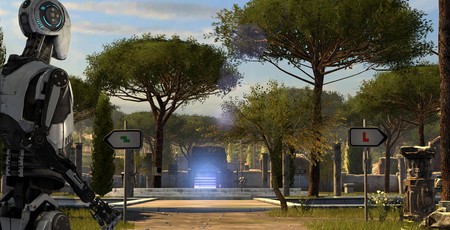
Puzzle games don’t always get the credit they deserve, often neglected in the all-time great rankings in favour of bloated open world games about sad mass-murdering dads. This is doubly unfortunate considering a good puzzler is also one of the hardest types of games to make. Ever tried drawing a maze or creating your own crossword for someone else to solve? It’s difficult enough to make one that works, let alone make one that’s precisely balanced to be challenging without being obstructive.
Now imagine designing 10 hours’ worth of said puzzles, in code, with enough variety to stop the player from becoming bored. Oh, and you’ve got to come up with your whole puzzling concept in the first place.
It’s a heck of a task, and one that really doesn’t get enough recognition. So it’s time for me to provide that recognition in handy, easily digestible list format. I wanted to focus specifically on more recent puzzle games, rather than trot out the familiar classics like Myth and Portal, as it’s been a fantastic few years for inventive, ingenious puzzlers, while a few of these games deserve far more attention than they’ve received.
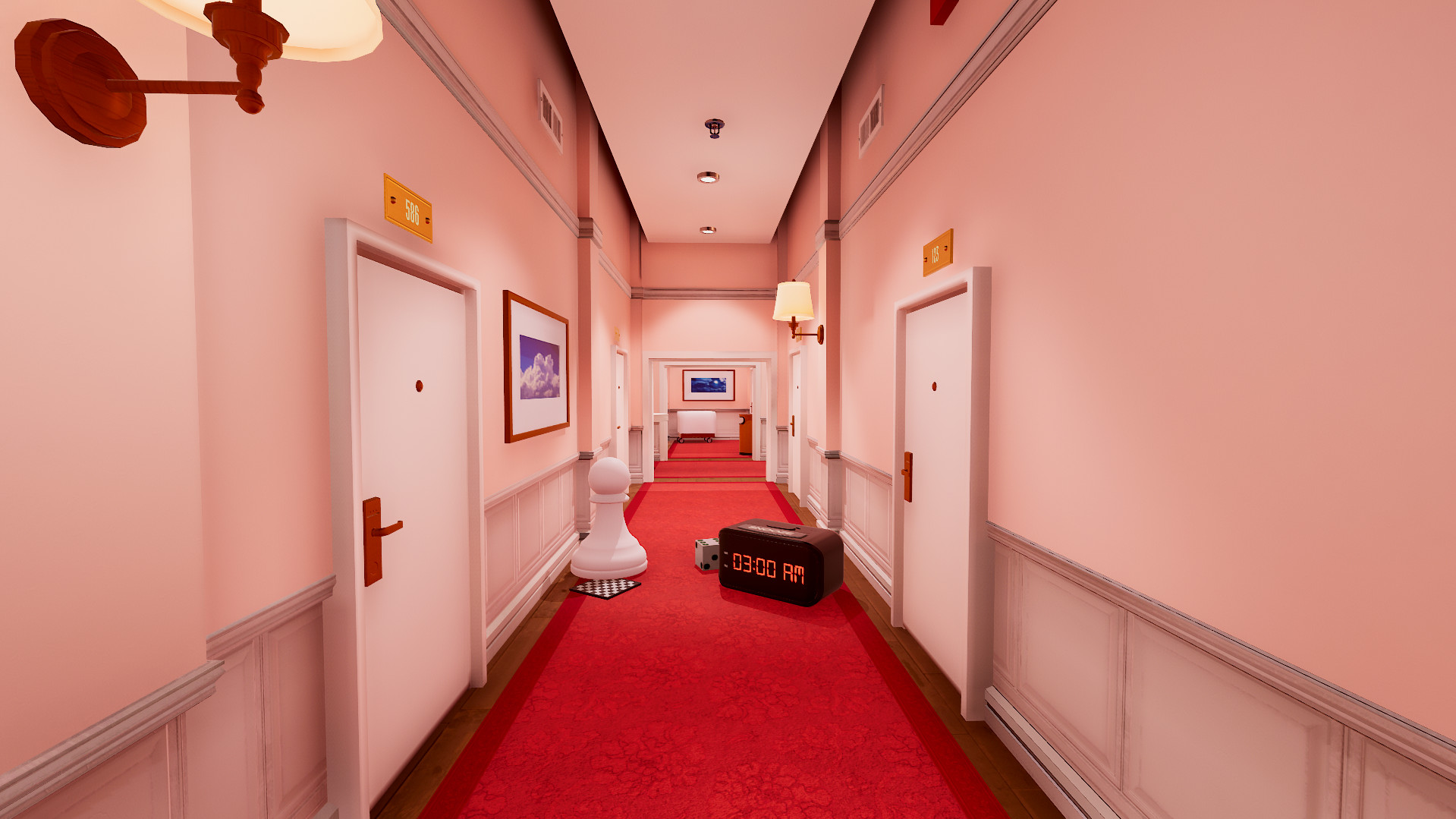
10. Superliminal
Superliminal has one of the coolest puzzling mechanics I’ve encounter since Portal, wherein you change the size of objects by picking them up and then moving around the room you’re in. To you, the can of soda or wedge of cheese you’ve picked up always looks the same size, but depending on how you move around relative to other objects in the room, when you put it down it’ll be as small as a pea or as big as a house.
It’s an incredible effect, and only one of Superliminal’s brilliant perspective-shifting tricks. Even the game’s story is a surprisingly touching little tale about finding new angles on personal problems. In structure and humour, Superliminal leans a little too heavily on Valve’s Portal for support, right down to having an amoral AI computer as one of its main characters. Yet it’s a smart and highly innovative puzzling adventure nonetheless.
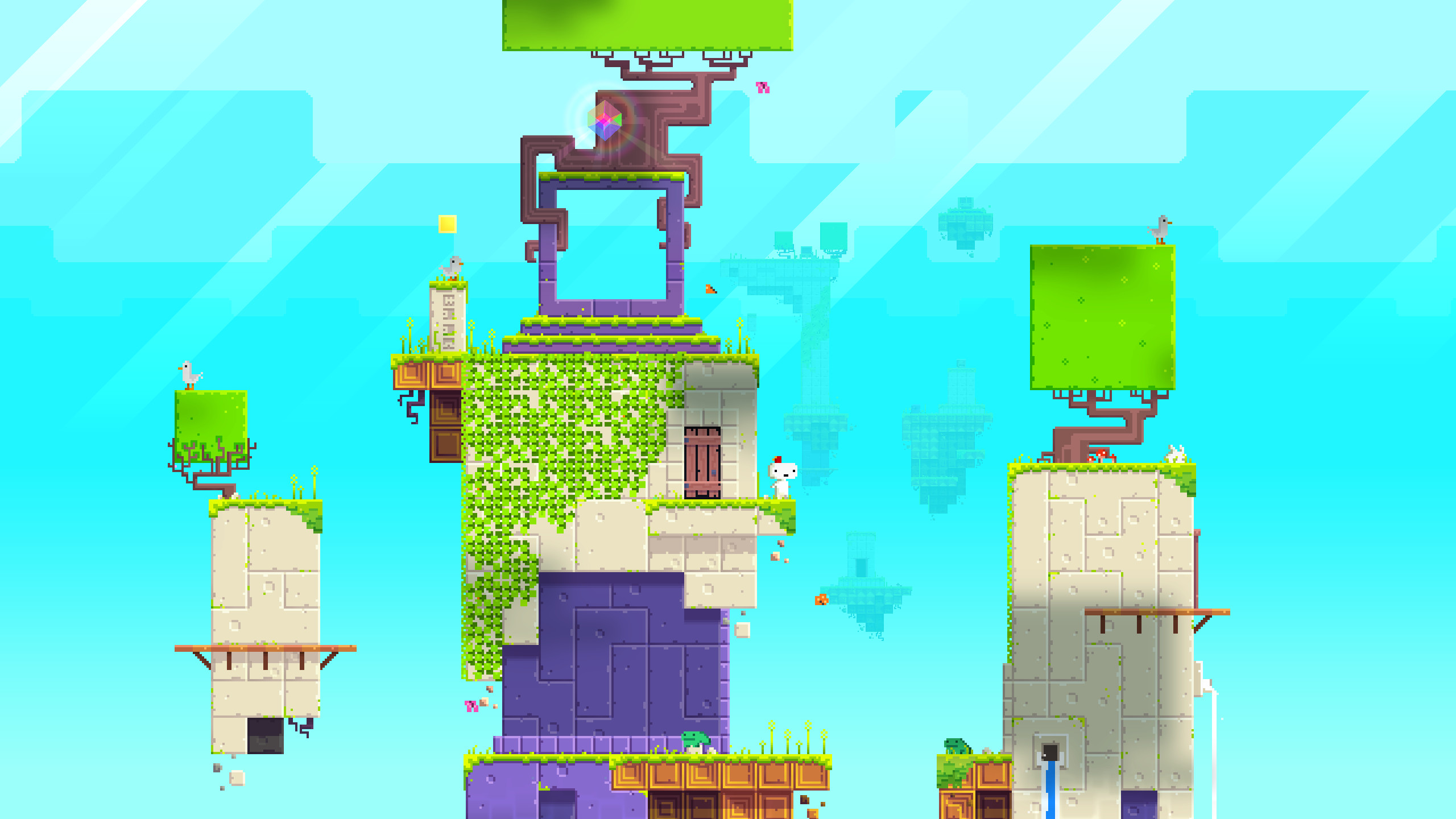
9. Fez
Like Superliminal, Fez is also about shifting perspectives, but its take on the concept couldn’t be more different. Initially presenting itself as a straightforward, retro-styled 2D platformer, Fez’s levels are actually fully three-dimensional, with players able to flip between any of a level’s four planes.
It’s an incredible gimmick which the game uses to produce some beautifully brain-teasing platforming enigmas. By spinning the level around, previously inaccessible platforms will suddenly line-up for you to jump across, while climbable creepers will connect to provide a pathway to the next stage of the level.
Fez combines these elements with some fantastic pixel-art, a delightful soundtrack, and a really fun and upbeat vibe. Also, while undoubtedly a clever game, it’s never smug with it, letting its brilliant concept do all the talking.
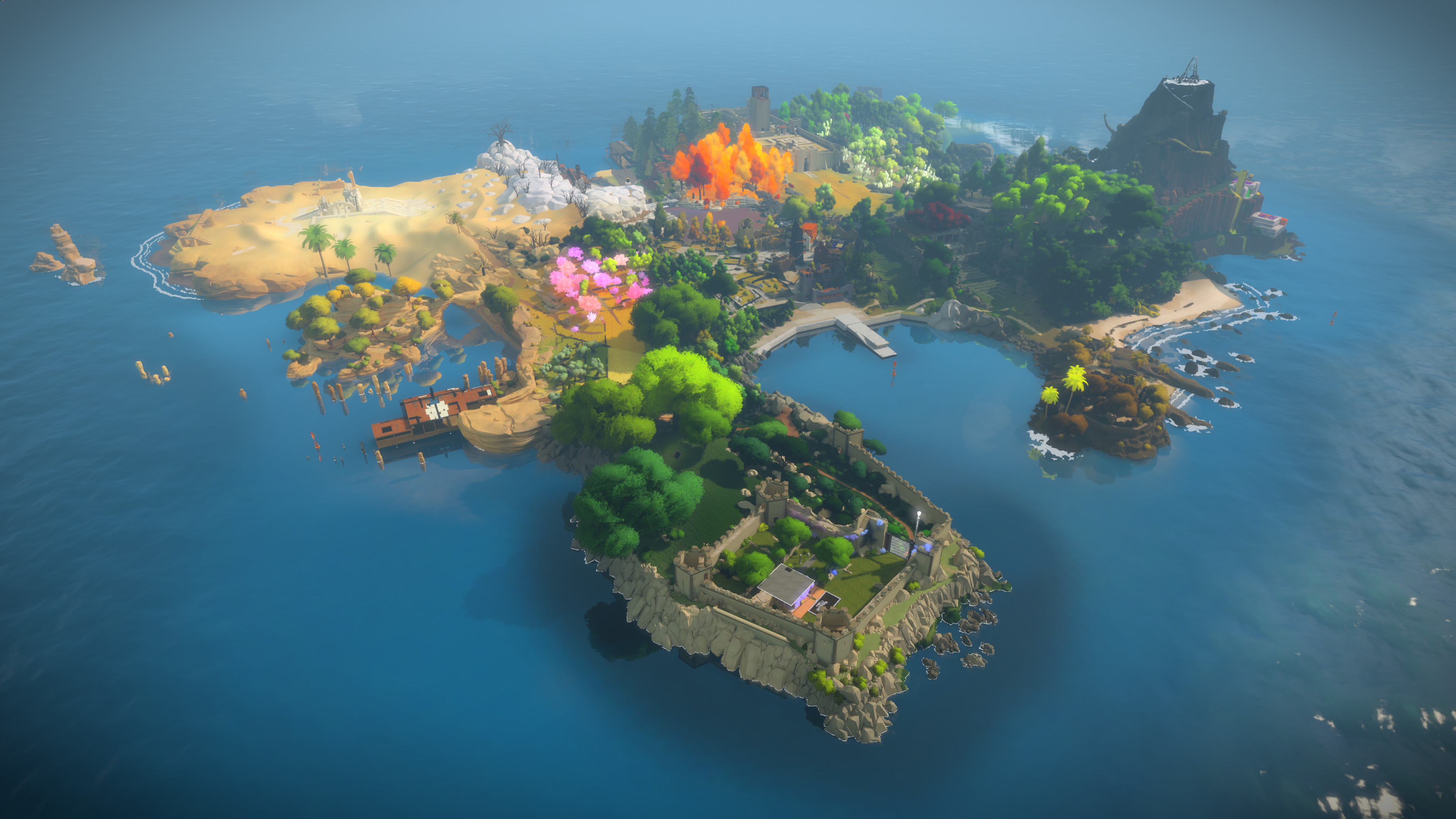
8. The Witness
Placing you on a beautiful and mysterious island, the Witness attempts to do for mazes what Doom did for shotguns. It’s truly astonishing what The Witness squeezes out of the common or garden maze. From classically styled “get to the exit” mazes, there are mazes where you draw two parallel lines, mazes where you draw two inverted lines, mazes where you need to draw a certain shape, mazes where you must follow or avoid a particular path. There even mazes built into the environment itself, revealed only when you stand in a certain position and click on a certain object.
Yet despite this abundance of mazes, the crux of the Witness’ puzzling is less about finding the right pathways, but deciphering the symbolic language that instructs you on how to solve different mazes. It’s this that forms the backbone of the game’s mystery, and your comprehension of that language will direct your journey across the island.
It’s hard to deny the quality of the The Witness’ open-ended puzzling. That said, it is undoubtedly one of the most pretentious games ever made, with a story told through audio-logs that are the height of pseudo-intellectual codswallop. It’s also a poor teacher, and if you don’t grok its obscure symbology, you’ll probably be playing it until the day you die.
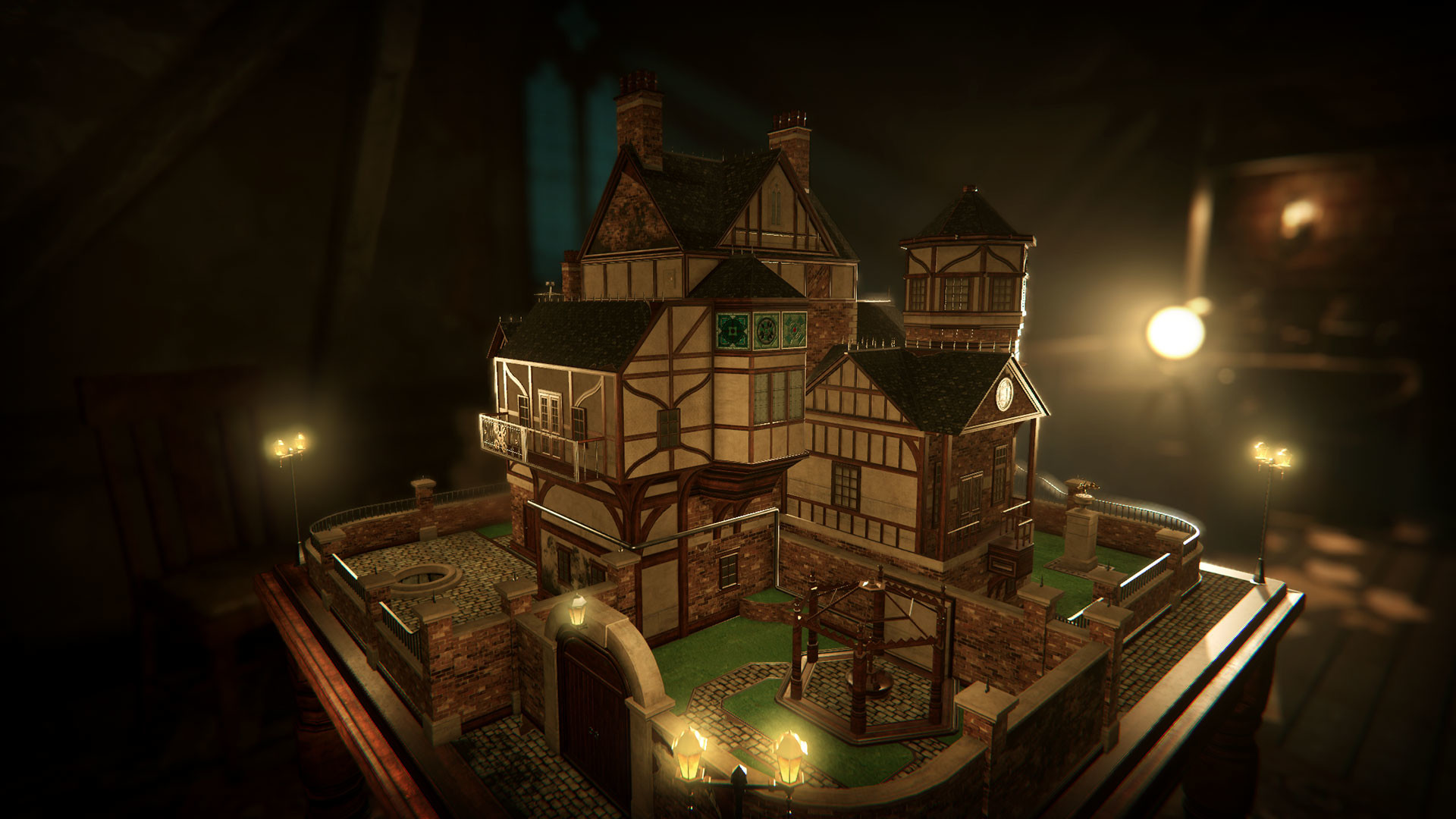
7. The Room 4: Old Sins
The Room series is largely responsible for bringing hidden-object puzzling back from the brink of obscurity. Through its intricate 3D puzzles connected together with spooky, compellingly told stories, The Room has quickly become one of the most successful puzzling series of the last ten years.
All the Room games are well made, including the excellent standalone VR experience. But my pick for the best is the most recent. The Room 4: Old Sins sees you slowly unpacking an elaborate dollhouse in some dusty Victorian attic, as you search for a missing engineer and his wife. Cleverly circumventing its “trapped in a single room” concept without actually breaking it, the Room 4’s dollhouse is a masterfully designed puzzle setting. Its tiny yet intricately crafted objects are a delight to grapple with, with a single roll-top desk containing more puzzles than some entire games.
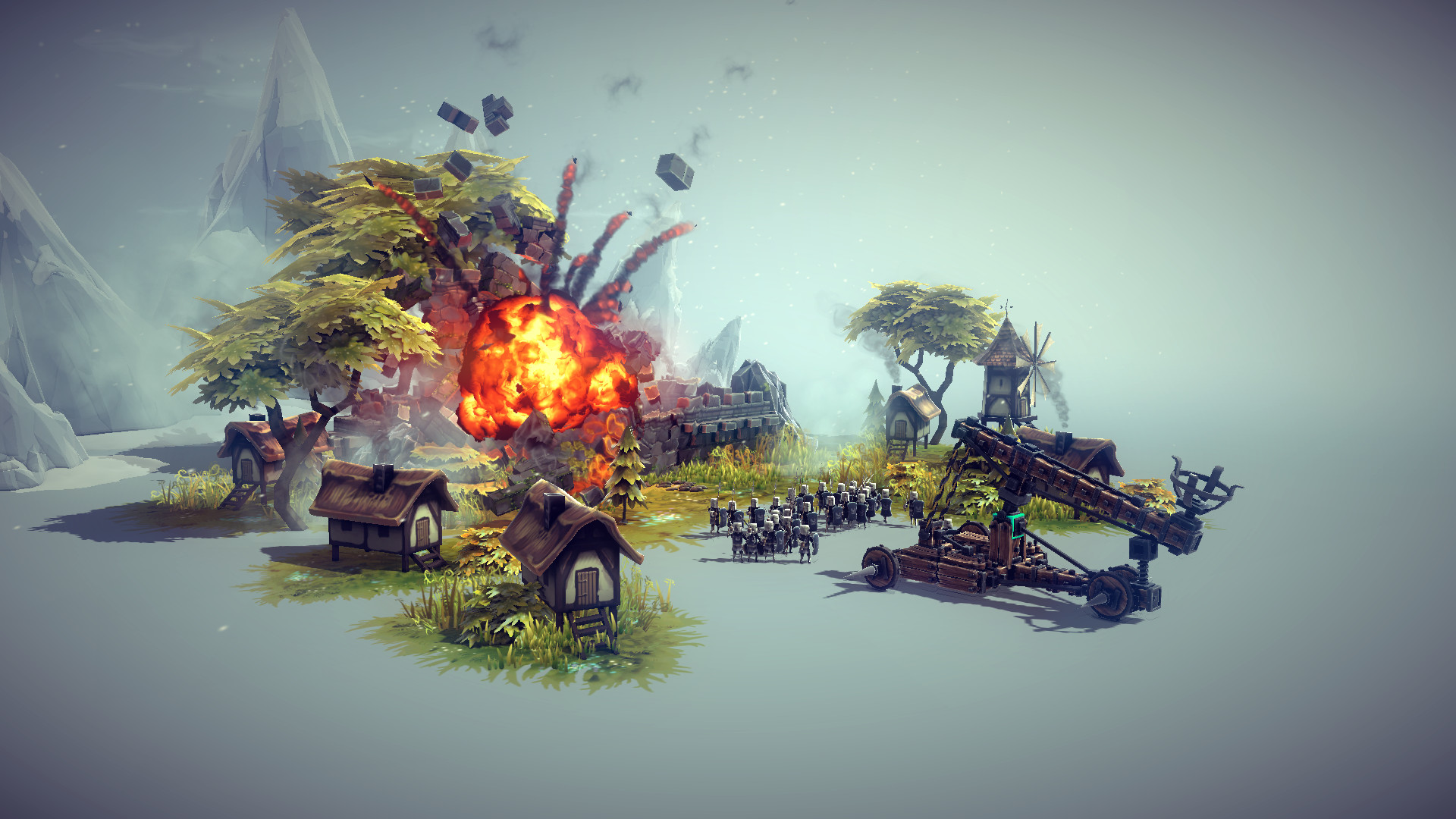
6. Besiege
Not only is Besiege one of the most unique puzzlers around, it’s also one of the funniest. This delightfully daft physics puzzler sees you building siege engines to conquer an archipelago of tiny fantasy kingdoms.
Each of Besiege’s diorama-like levels involves constructing a deadly contraption to obliterate an obstacle, such as a castle or an enemy army. How you approach this is largely up to you. You could attempt to build a working catapult, a battering ram, a mobile drill, or a mechanical mongrel of your own devising, like a flying, exploding lawnmower. The only rules are that your creation must fit within the level’s bounding box, and that it must last longer than whatever you’re trying to destroy.
This latter rule is much harder to follow than its sounds. The game’s accurate-ish physics mean your siege weapon must account for weight distribution, torque, tension, suspension, and many other considerations. Build a catapult without compensating for the weight of your ammunition and it’ll fall over backward the moment you try to fire. Build a helicopter without bracket reinforcements and it’ll tear itself apart quicker than a washing machine filled with marbles.
Besiege brilliantly blends open-ended creativity with genuinely challenging puzzles, then sprinkles the whole experience with silly humour. Success is satisfying and failure is hilarious, which is the best of both worlds for any physics puzzler.
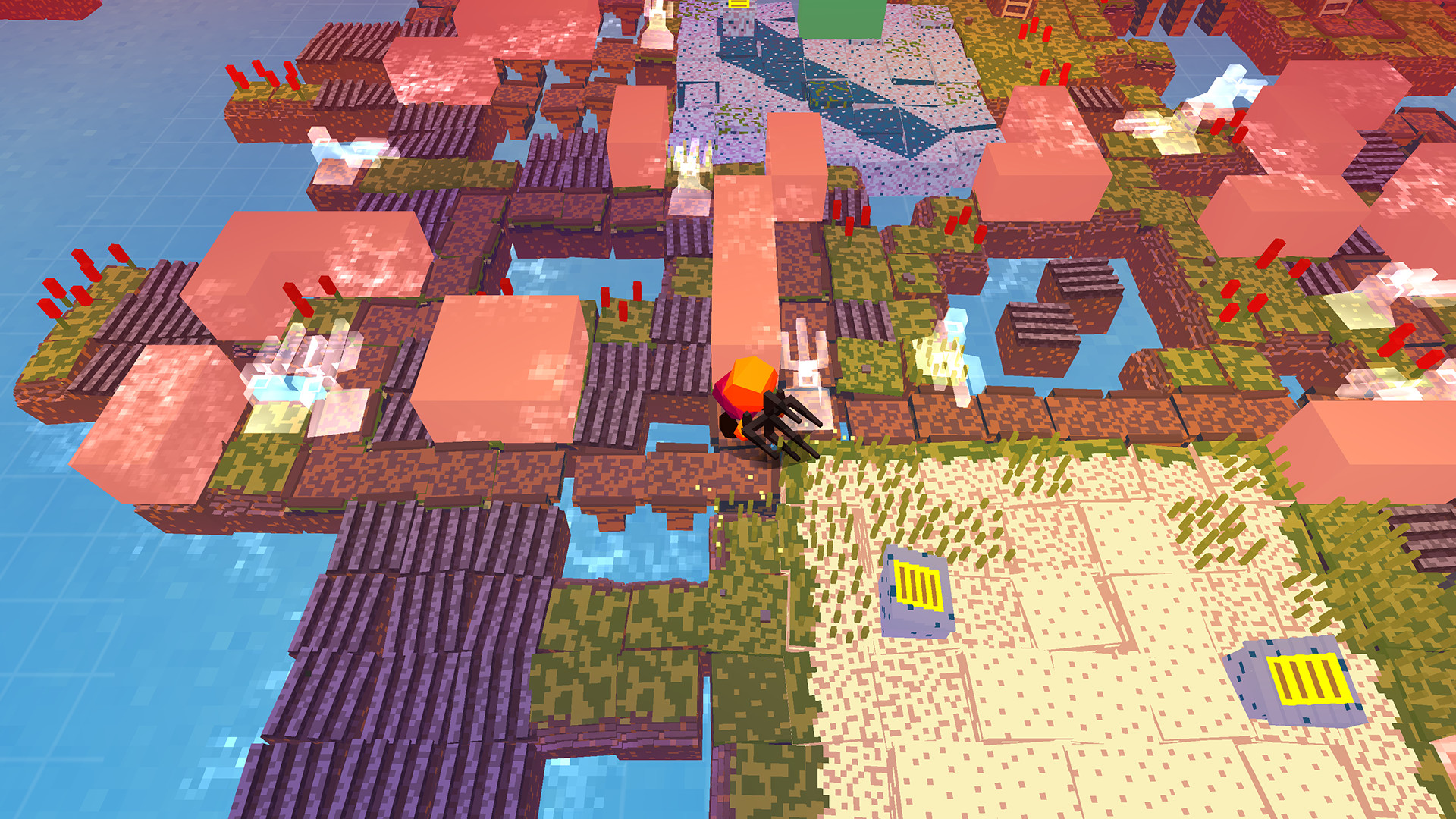
5. Stephen’s Sausage Roll
Stephen’s Sausage Roll may look like the result of eating a dodgy Greggs, but beneath its pebbledashed-pavement aesthetic is one of the most ingenious and fearsomely challenging puzzlers ever made.
Set on a vast, blocky island, Stephen’s Sausage Roll game involves helping a tiny chef roll his giant sausages onto grills to cook them. Crucially, the sausages must be cooked evenly, which means that both ends and both sides of the sausage must be rolled onto the grill once. Burn any part of a sausage, or accidentally roll it into the sea, and you’ve ruined the chef’s dinner, you terrible person.
What results is a puzzle game that demands careful planning and precise execution. Your chef’s enormous fork means he can only turn around in certain areas, making it even easier to back yourself into a corner. Yet while the game demands precision, it is forgiving of mistakes, allowing you to undo recent moves without restarting the whole puzzle. It also layers its complexity gradually, ensuring you understand the rules before hitting you with its most difficult pork-based-problems.
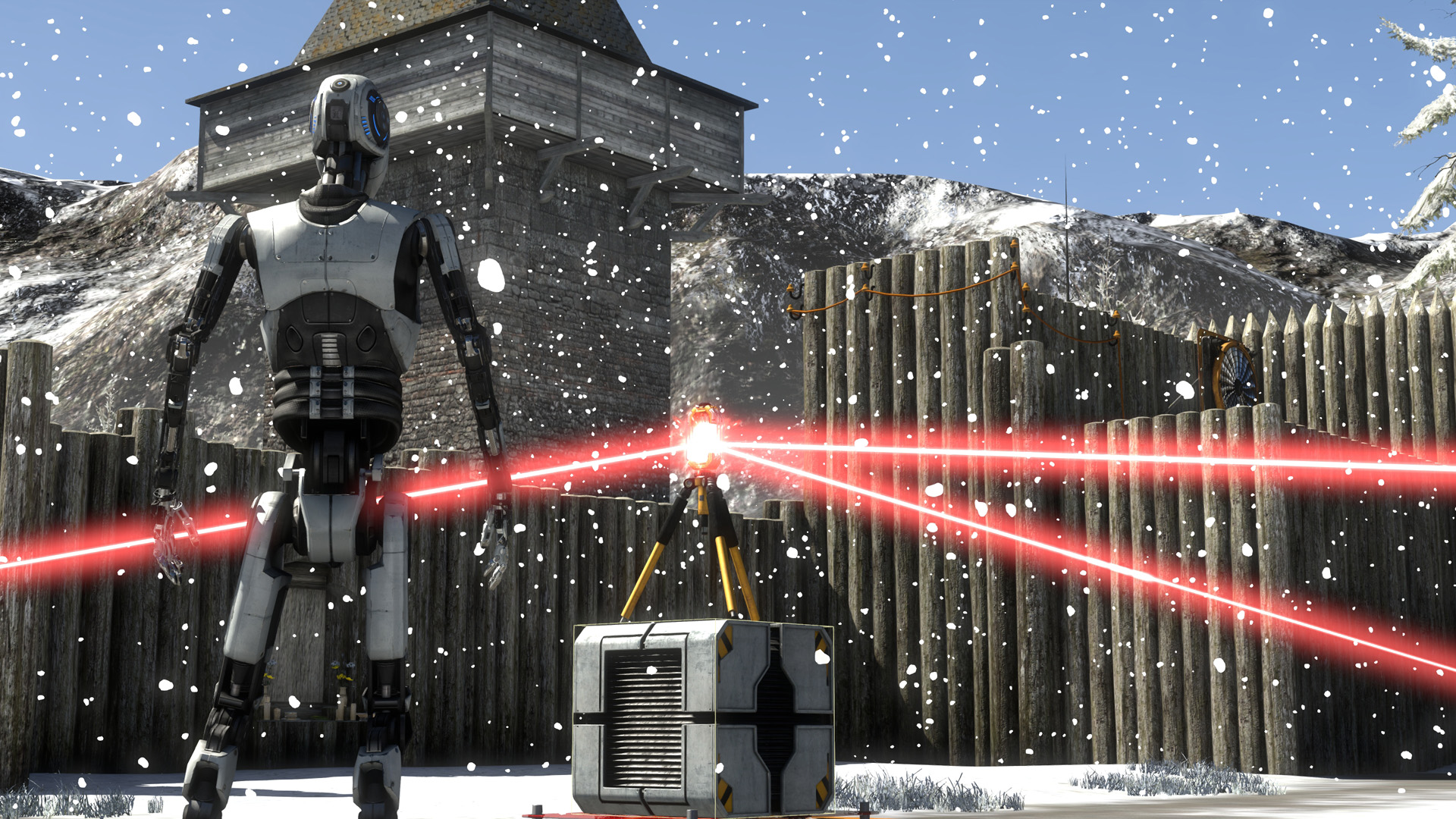
4. The Talos Principle
In many ways the Talos Principle is the odd one out of this list. Most games featured here focus on doing one idea well, but not Talos Principle. The puzzles are also the most interesting feature of those other games, but not the Talos Principle. Yet neither of these features stop The Talos Principle from being one of the best puzzlers ever made.
The Talos Principle’s puzzles take on various forms, ranging from moving cubes to messing with lasers. Some puzzles even involve playing with time, in the form of recording your body’s own actions and then playing them back in the environment. Like Portal, each puzzle has its own self-contained “chamber” but unlike Portal you can tackle the puzzles in any order you like, helping alleviate frustration.
What makes The Talos Principle special, however, is how it melds its puzzling with storytelling. Your character is a robot, doing puzzles amid ancient ruins at the behest of a god calling itself Elohim. Elohim has created this world for you, it says, and you may wander as you wish so long as you don’t attempt to ascend the central tower, where only death awaits you. Yet dotted around the ruins are computer terminals, where a mysterious figure poses philosophical questions to you about the nature of existence, reality, and so forth. It’s a truly remarkable suffusion of ideas, resulting in developer Croteam’s best game.
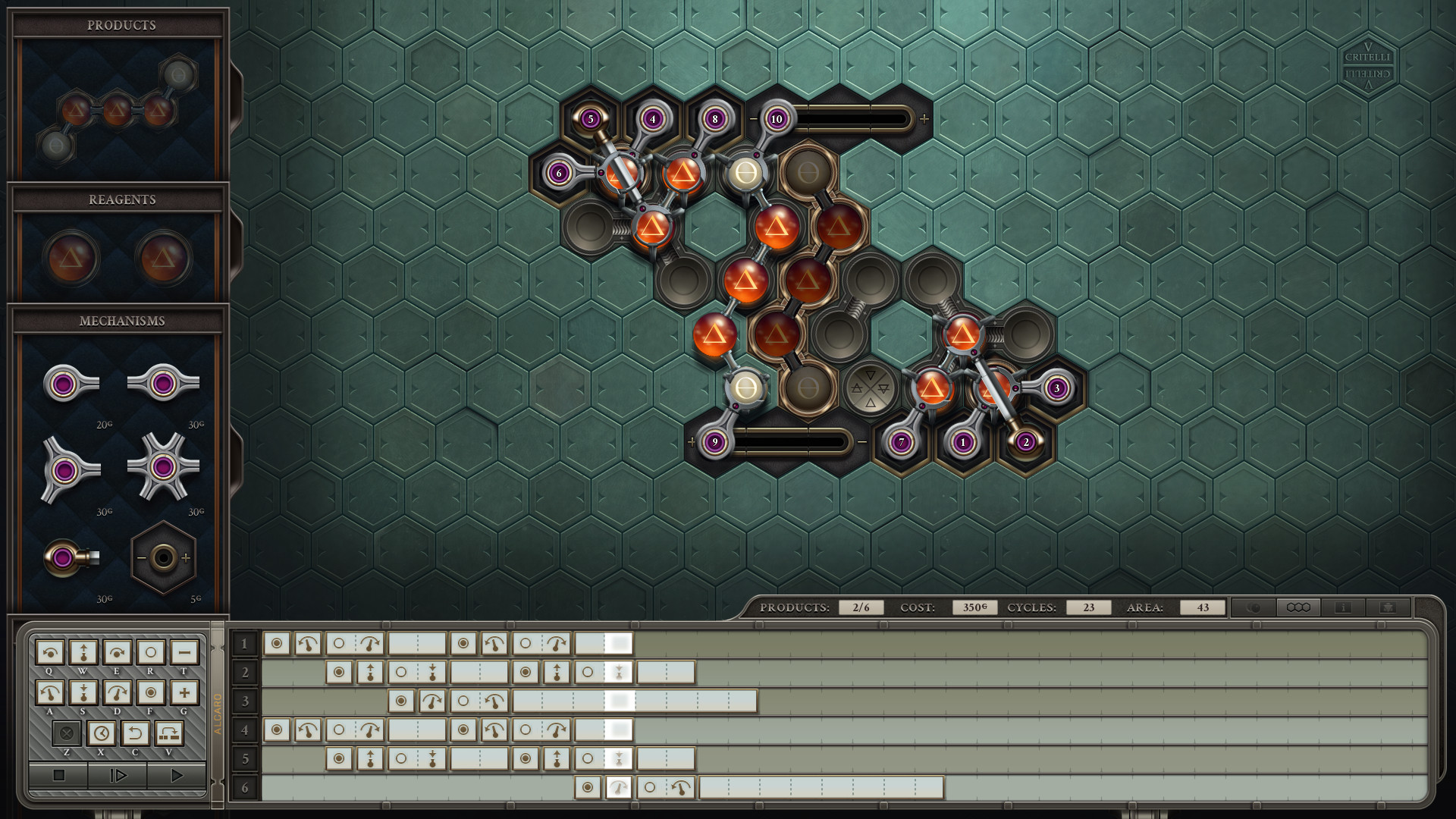
3. Opus Magnum
Most puzzle games challenge you with finding the right solution. Opus Magnum challenges you with finding the best solution. The game puts you in the role of Head Alchemist of a great house in its own fantasy kingdom. Your job is to create alchemical products using a device known as the Transmutation Engine.
Opus Magnum plays essentially like Factorio in microcosm. You have four different elements, air, earth, fire and water plus a few additional metals, which you need to arrange in specific orders to produce different products. These could be anything from a ladder to a type of alcoholic beverage. You create these products by outfitting your transmutation engine with mechanical arms, conveyors, and other doohickies to essentially create a pre-industrial assembly line.
Each puzzle offers a broad canvas on which to build your engine, which means there are many solutions. Yet once completed, your machine is rated according to three criteria – size, total cost of components, and the number of actions your machine took. In this way, Opus Magnum subtly challenges you into improving your existing design. You find yourself thinking “How can I make this smaller, faster, better?”, tumbling down a rabbit hole of automotive efficiency.
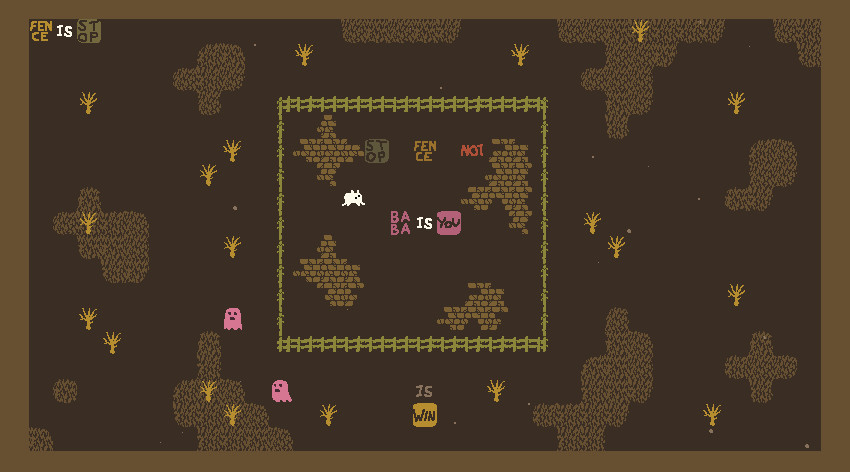
2. Baba Is You
If you’ve ever tried your hand at programming, whether it’s making your own game or just dabbling with the code of your website, you’ll know that puzzle-solving is a major part of the process. Debugging and fixing error messages is basically a logical deduction challenge, as you try to figure out exactly why the code isn’t doing what you want, why your syntax is wrong, what tiny mistake you’ve made.
Baba is You essentially takes the challenges of programming and remodels them into an accessible and ingenious puzzle game. Each puzzle in Baba is You revolve around short strings of words that dictate the rules of that puzzle. “Baba is You” for example, means that you control the character known as Baba, while “Rock is Push” means that rocks can be pushed around by other things. But these words can themselves be pushed around and rearranged. Change Baba Is You to Rock is You, for example, and suddenly you’ll assume control of the rock.
The result is a puzzle game about breaking the rules, where you solve its conundrums by coming up with your own cheat codes. It’s enormously satisfying and so, so clever, packing an immense amount of puzzling fun into a tiny, simple-looking package.
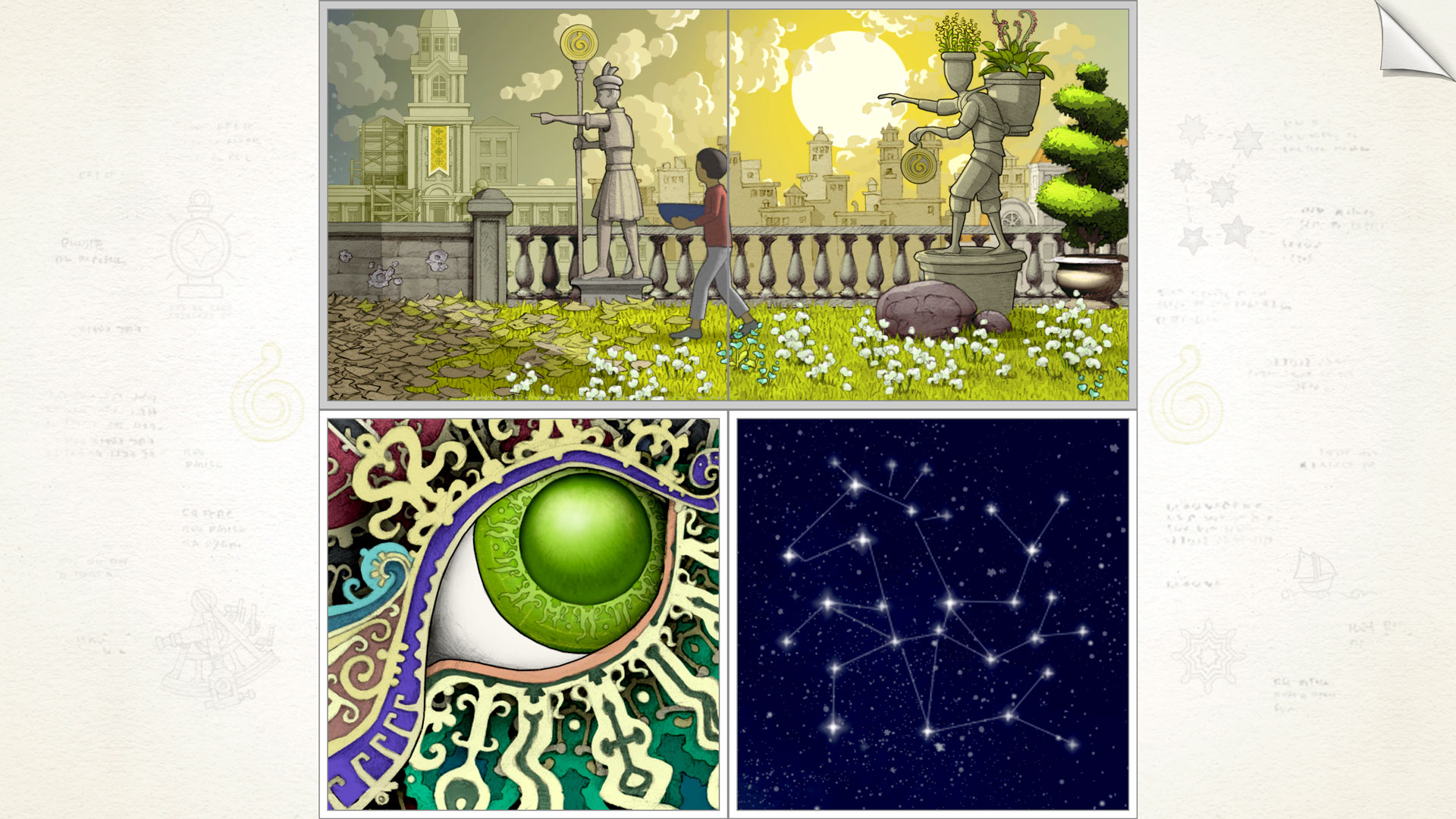
1. Gorogoa
Everybody in the world should play Gorogoa. In fact, everybody who has ever lived should play Gorogoa. Not only is it the most ingenious and original puzzler for years, it’s also an astounding work of visual art.
To describe Gorogoa in a way that frankly does it injustice, the game basically combines a comic-book with a jigsaw puzzle. It tells a magical-realist storey about a young boy searching for five special fruit to feed to a dragon that has suddenly appeared in his hometown. At any given moment, your screen is split into four panels, each of which contains different images.
These images may be part of the same picture, thematically similar, or completely different. Yet they will have some connection, as they need to be linked so the boy can progress on his journey. Your job is to find these connections, often hidden deep within the panels, or indeed within connections between other panels. Find these and fit them together, and the story moves along.
What results is a stupendous, interactive kaleidoscope of a game. Everything about Gorogoa is astonishing, the puzzles, the subtle storytelling, the music, the art. Oh my goodness, the art. Gorogoa takes patterns and imagery from a huge array of different cultures, bringing them together to produce an imagined cityscape that feels entirely cohesive. It’s a masterpiece, without a doubt the best puzzle game of the last decade.

MSI MPG Velox 100R Chassis Review
October 14 2021 | 15:04






Want to comment? Please log in.